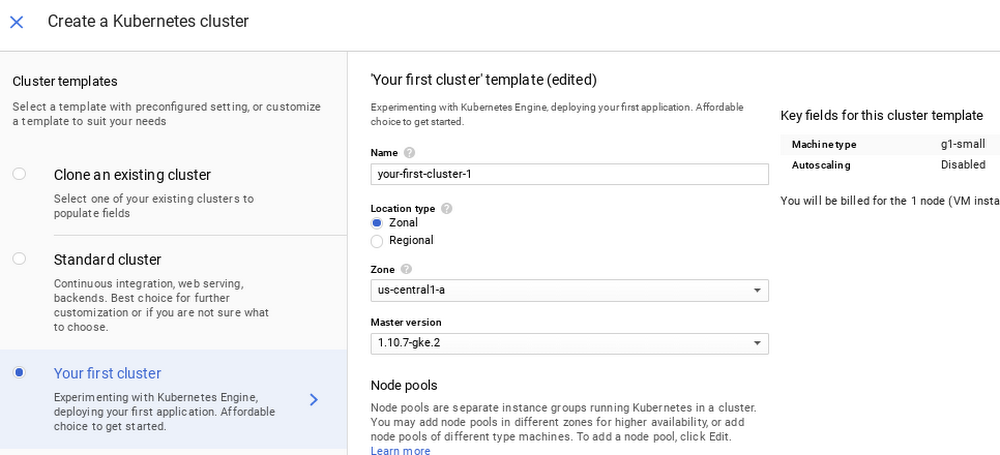A developer onramp to Kubernetes with GKE

William Denniss
Group Product Manager, Google Kubernetes Engine
In the four years since we launched Google Kubernetes Engine (GKE), it has become a fast favorite among enterprises running large container-based applications in production. But even the biggest, most mission-critical system was once just a prototype, and even the largest organization was once just a startup.
If your application is just getting off the ground there are a lot of reasons you should develop and run it on GKE. Starting with Kubernetes means you’re using the industry-standard container orchestrator, which is able to handle your app’s growth in traffic and complexity. With GKE, you can go from serving your containers in a single-host cluster to a ten-thousand core deployment in just a few clicks. And since it’s Kubernetes, it can handle all the complex requirements you throw at it, like high availability and support for stateful applications.
Today, we are announcing a set of tools and resources to make it much easier—and more affordable—to run small environments of up to four nodes on GKE.
- kubehost - An open-source utility for exposing services that run on a single-host Kubernetes cluster to the world, designed for non-production development workloads. Using kubehost lowers the monthly cost of running a single-node GKE cluster with an external web service by more than 50%. Then, when you’re ready to scale your environment, kubehost makes it easy to upgrade your single-host service so it runs with the production-grade Google Cloud Load Balancer.
- Developer template - To help get your GKE environment up and running as fast as possible, we’ve created a new template for small development environments. Initially created by our solutions architect team for internal use, this template has been vetted by the GKE team, and been battle tested in numerous customer engagements. You can access the new template directly from the Google Cloud Console when you’re creating a cluster by selecting “Your first cluster”. The developer template has started to roll-out to some GKE customers, and will be available to all users soon.
- Documentation - GKE customers tell us they love the platform, but they wish our documentation were richer. We hear you loud and clear. A new GKE How-to Guide details several common configurations that we’ve seen developers create.


To begin with GKE, check out these great tutorials and this quickstart. You can also use our $300 free credits to get started with GKE. Then, in the coming weeks, watch this space for a series of developer-focused blog posts on how to get even more out of the Kubernetes experience with GKE.
1. 1x g1-small node with Load Balancing compared to a 1x g1-small using kubehost
